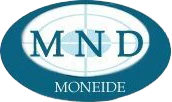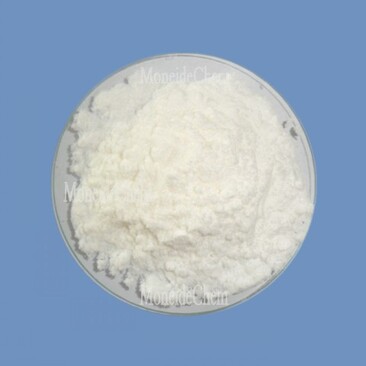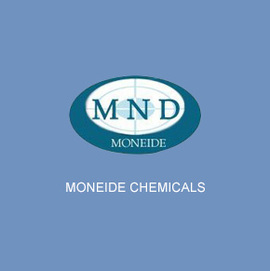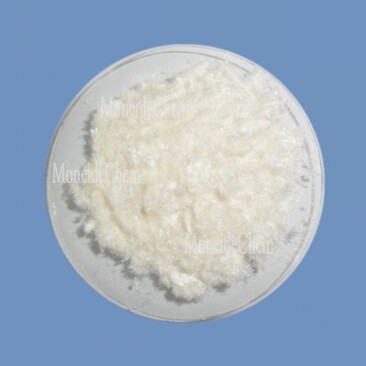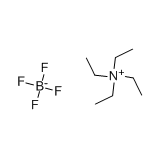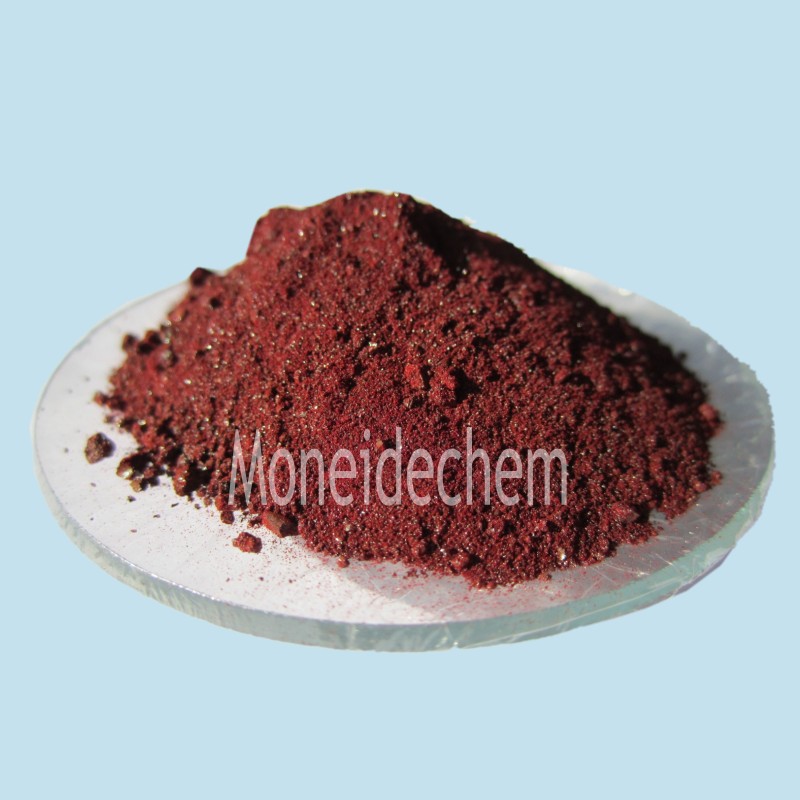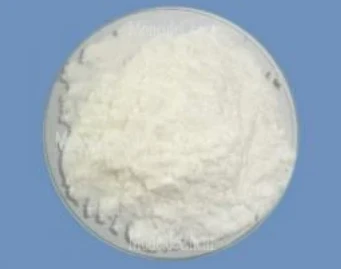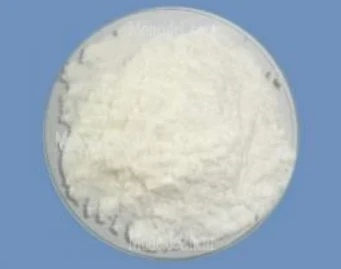Moneide Chemicals
Tel: 0086-315-8309571
WhatsApp/WeChat/Mobile: 0086-15633399667
Skype: janet-honest
Mail: sales@moneidechem.com
Address: 2-7-523 Jidong Building Materials Commercial Center, Tangshan, Hebei 064000 China
Vibrant Basic Red 9 Dye: Premium Quality for Textiles & Paper
- जारी करने का समय:सितम्बर . 01, 2025 06:20
(सारांश विवरण)तांगशान मोनेइड ट्रेडिंग कंपनी लिमिटेड चीन में बढ़िया रासायनिक उत्पादों के निर्यात में विशेषज्ञता वाली एक व्यापारिक कंपनी है। पिछले कुछ वर्षों में, हमने चीन में कई उत्कृष्ट रासायनिक उत्पादन उद्यमों के साथ अच्छे सहकारी संबंध स्थापित किए हैं, और कुछ उत्पादों पर अनुसंधान और विकास में सक्रिय रूप से सहयोग किया है। हमारी कंपनी की उत्पाद श्रृंखला में मुख्य रूप से शामिल हैं: इलेक्ट्रोप्लेटिंग रसायन, कार्बनिक और अकार्बनिक फ्लोरो रसायन, कार्बनिक मध्यवर्ती रसायन, चरण स्थानांतरण उत्प्रेरक और संकेतक या जैविक दाग।
- Categories:कंपनी की गतिशीलता
- लेखक:
- मूल:
- जारी करने का समय:2019-12-30 10:55
- Views:
In the intricate world of industrial dyes, basic red 9 stands as a historically significant and continuously relevant compound. Also known by its CAS Registry Number 569-61-9 or simply cas 569 61 9, this triphenylmethane dye plays a pivotal role across numerous sectors requiring vibrant, long-lasting red coloration. Its versatility and robust performance characteristics have ensured its enduring presence in various manufacturing processes, from textiles to paper and beyond. This article delves into the technical aspects, market trends, and strategic applications that define the value proposition of this critical industrial dye.
Our exploration will cover the detailed manufacturing process, crucial technical specifications, diverse application scenarios, and the inherent advantages offered by basic red 9. Furthermore, we will address contemporary industry trends, provide a framework for vendor comparison, discuss the possibilities of customized solutions, and present compelling application case studies. Our aim is to provide B2B decision-makers and technical professionals with a comprehensive understanding of this essential chemical compound, underpinned by data and adherence to Google's standards.
The industrial dye market is a dynamic landscape influenced by global economic shifts, evolving regulatory frameworks, and increasing consumer demand for sustainable and high-performance products. Key trends impacting the demand for compounds like basic red 9 include:
Despite these overarching trends, the intrinsic value of established dyes like basic red 9, with its proven efficacy and cost-effectiveness, ensures its continued relevance, particularly in traditional manufacturing sectors that prioritize performance and economic viability.
Basic Red 9 (also known as C.I. Basic Red 9, C.I. 42500, or Parafuchsine) is a triphenylmethane dye characterized by its vibrant red hue and strong tinctorial power. Its chemical identity is defined by the formula C19H18सीएलएन3 and a molecular weight of 323.82 g/mol. Understanding its precise technical specifications is crucial for optimal application and performance in industrial settings.
These parameters highlight the performance capabilities of basic red 9, emphasizing its suitability for applications where a strong, consistent red shade is required, particularly on anionic substrates. Its moderate light fastness indicates its suitability for indoor applications or where color degradation due to prolonged sun exposure is not a primary concern.
The production of basic red 9 (cas 569 61 9) involves a precise chemical synthesis pathway, typically starting from aniline and its derivatives. The process is a multi-step organic reaction, demanding stringent quality control at each stage to ensure the purity, strength, and consistency of the final dye product.
High-grade aniline and para-toluidine (or similar aniline derivatives) are sourced. These primary amines are critical precursors. Other essential reagents include formaldehyde solution, hydrochloric acid, and oxidizing agents (e.g., nitrobenzene or mild air oxidation catalysts). All materials undergo rigorous incoming quality inspection against established purity standards. Aniline and para-toluidine are condensed with formaldehyde in the presence of a strong acid catalyst (like hydrochloric acid). This reaction forms a leuco base, a colorless intermediate. The temperature, pressure, and reaction time are meticulously controlled, often using reaction vessels equipped with precise heating and cooling systems (similar to controlled CNC machining environments in precision engineering, but for chemical synthesis) to ensure optimal yield and prevent side reactions. The leuco base is then oxidized. Historically, nitrobenzene was used, but modern methods often employ milder oxidants or catalytic air oxidation, aligning with green chemistry principles. This step converts the leuco base into the carbinol base (or pseudo-base). The carbinol base is then treated with hydrochloric acid (HCl) to form the protonated, colored dye salt – basic red 9. This process involves the protonation of the amino groups, which leads to the delocalization of electrons across the triphenylmethane structure, resulting in the characteristic red color. The crude dye solution undergoes purification steps, often involving salting out, filtration, and washing to remove impurities, unreacted starting materials, and by-products. This is a critical stage for achieving high purity levels and enhancing the dye's performance characteristics like shade, solubility, and fastness properties. The purified wet cake of basic red 9 is dried using various methods (e.g., spray drying, tray drying) to achieve a consistent moisture content. The dried product is then ground to a fine powder of uniform particle size, which is essential for consistent dissolution and application in industrial dyeing baths. Every batch undergoes stringent quality control testing. This includes spectrophotometric analysis for color strength and shade, impurity profiling via chromatography, and evaluation of solubility and fastness properties. Testing standards typically conform to international benchmarks like ISO (e.g., ISO 105 series for color fastness) and in-house specifications to ensure product consistency and meet target industry requirements.
The robust manufacturing process, akin to precision engineering in its focus on control and standards, ensures the integrity and performance of basic red 9. This meticulous approach contributes to an extended service life in applications within target industries such as petrochemical (for specific identification), metallurgy (coatings), and particularly in water supply & drainage (tracer dyes or coloration of specific components) where chemical stability and resistance are paramount. The inherent stability of the dye structure, combined with precise manufacturing, contributes to advantages such as energy saving through efficient dyeing uptake and enhanced corrosion resistance of colored materials by providing a stable, protective coloration.
The wide utility of basic red 9 stems from its strong cationic nature, which enables it to bind effectively to anionic substrates. This property makes it indispensable across a diverse range of industries.
Historically, cas 569 61 9 has been a staple for dyeing acrylic fibers, modified polyesters, and some cellulosic materials (like cotton, especially when pre-mordanted). It provides bright, intense red shades crucial for fashion, upholstery, and industrial textiles. Its application allows for vibrant coloration at relatively low concentrations, contributing to energy saving in the dyeing process due to high affinity and efficient exhaustion rates. In paper manufacturing, basic red 9 is used for pulp dyeing, surface coloring, and coating applications. It's particularly effective for producing colored papers, specialty boards, and tissue products. Its excellent affinity for cellulosic fibers ensures uniform coloration and good fastness properties, crucial for functional papers and packaging. For leather dyeing, this basic dye imparts rich red shades, enhancing the aesthetic appeal of various leather goods, from apparel to accessories. Its ability to penetrate and bind effectively to leather fibers ensures deep, uniform color and satisfactory service life. Basic red 9 is also found in the formulation of certain inks, particularly for flexographic and gravure printing, where its strong color and solubility are advantageous for producing vivid reds in printed materials. Beyond traditional uses, it finds application as a biological stain in microscopy (e.g., as a component of Fuchsin stains) and sometimes as a minor component in some plastics and rubber for specific coloration needs, providing good compatibility and an acceptable service life. Its chemical stability also contributes to its performance in demanding industrial environments where resistance to certain chemical agents is required.
The broad spectrum of applications underscores the adaptability and essential nature of basic red 9 within the industrial chemical landscape. Its cost-effectiveness combined with robust performance ensures its continued demand across these diverse sectors.
The enduring popularity of basic red 9 in industrial applications is attributed to several significant technical advantages that it offers over alternative coloring agents. These benefits translate directly into operational efficiencies, cost savings, and superior end-product quality.
Basic red 9 exhibits exceptionally high color yield, meaning less dye is required to achieve a desired depth of shade. This translates to material cost savings and reduced environmental impact from dye effluent. Its vibrant, clear red hue is difficult to achieve with many other dye classes, making it a preferred choice for visually impactful products. Its cationic nature ensures strong ionic bonding with negatively charged sites on fibers such as acrylics, silk, wool, and modified cellulosic materials. This results in superior dye uptake and fixation, leading to improved wash fastness and overall durability of the coloration. Compared to many reactive or disperse dyes, cas 569 61 9 offers an economical solution for achieving strong, bright red shades. Its high tinting strength further enhances its cost-efficiency by minimizing the amount of dye needed per batch. While particularly strong on acrylics, its applicability extends to paper, leather, and specific plastic formulations, demonstrating its broad utility and adaptability to different industrial processes and material compositions. This versatility simplifies inventory management for manufacturers serving multiple product lines. In dyeing processes, basic red 9 often exhibits good leveling, meaning it distributes evenly across the substrate, preventing uneven coloration or streaking. This is critical for consistent product quality in large-scale manufacturing. Due to its high exhaustion rate and efficient binding mechanism, the dyeing process with basic red 9 can often be conducted at lower temperatures or for shorter durations compared to some other dye classes, contributing to reduced energy consumption in industrial dyeing baths.
These technical advantages collectively position basic red 9 as a robust, reliable, and economically viable choice for manufacturers seeking high-quality red coloration in their products.
Choosing the right supplier for basic red 9 is crucial for ensuring consistent product quality, process efficiency, and supply chain reliability. While the chemical formula 569-61-9 is standardized, the quality and support services offered by vendors can vary significantly. B2B decision-makers should evaluate suppliers based on several key criteria.
A reliable supplier will not only provide high-quality basic red 9 but also act as a partner, offering technical expertise and adaptable solutions. Moneidechem, for instance, focuses on delivering industrial dyes that meet stringent purity and performance benchmarks, backed by comprehensive support services. This strategic partnership approach minimizes production risks and optimizes operational efficiency for our clients.
While basic red 9 offers a standard set of properties, specific industrial applications often benefit from tailored solutions. Customization ensures optimal performance, reduces waste, and streamlines integration into existing processes.
Customization options can include:
Manufacturers can specify a precise dye strength (e.g., 50%, 75%, 100%) to match their exact formulation requirements, simplifying their batching processes and minimizing potential errors. For certain applications, such as fine paper coatings or specialized ink formulations, a specific particle size distribution of cas 569 61 9 may be critical for optimal dispersion and color uniformity. Suppliers can provide micronized or coarser grades as needed. While basic red 9 provides a distinct red, it can be pre-blended with other dyes to achieve a unique shade (e.g., a specific maroon or scarlet) or to enhance certain fastness properties for a client's particular product line. From bulk bags to specific drum sizes, packaging can be customized to integrate seamlessly with a client's operational logistics, reducing handling costs and waste. Beyond product modification, experienced suppliers offer in-depth technical consultation. This includes advising on dye selection, optimizing dyeing parameters, troubleshooting application issues, and conducting laboratory trials to validate customized formulations for basic red 9.
Engaging with a supplier capable of providing these customized solutions ensures that the use of basic red 9 is not just a procurement decision, but a strategic partnership that enhances product quality and operational efficiency.
The practical application of basic red 9 demonstrates its critical role across various industries. These case studies highlight the dye's effectiveness and the value added by strategic partnerships with suppliers.
A leading textile manufacturer specializing in acrylic yarns for knitwear faced challenges in achieving consistently vibrant and fade-resistant red shades. Their previous supplier's basic red 9 exhibited batch-to-batch variation and inadequate light fastness, leading to significant rejects and customer complaints.
A manufacturer of high-end specialty packaging required a deep, uniform red for their luxury product lines. They struggled with speckling and uneven dye distribution using their existing supplier's basic red 9 powder, impacting the visual appeal of their packaging.
These cases demonstrate how precise product specifications, expert technical support, and the inherent properties of basic red 9 can lead to tangible improvements in product quality and operational efficiency.
At Moneidechem, we are committed to upholding the highest standards of Expertise, Experience, Authoritativeness, and Trustworthiness () in our provision of industrial chemicals like basic red 9.
Our commitment to trustworthiness is reflected in our transparent policies and robust customer support.
We maintain robust inventory levels for basic red 9 and operate efficient logistics networks. Standard lead times range from 7-14 business days for domestic orders and 21-30 days for international shipments, depending on destination and volume. Expedited shipping options are available upon request to meet urgent production schedules. Our global distribution partners ensure timely and secure delivery.
Moneidechem warrants that all products, including basic red 9, will meet the specifications outlined in their respective Certificates of Analysis (CoA) for a period of 12 months from the date of shipment, provided they are stored and handled according to our recommendations. Any product found not to conform to specifications will be replaced or credited.
Our dedicated customer support team and technical specialists are available to assist with product inquiries, order placement, technical guidance, and troubleshooting. We offer comprehensive after-sales support, including on-site visits for complex application challenges and continuous technical consultation to ensure optimal performance of basic red 9 in your processes. Contact us via phone, email, or our website for prompt assistance.
Basic red 9 remains an indispensable dye in numerous industrial applications, celebrated for its intense color, excellent affinity for target substrates, and economic advantages. Its consistent performance across textiles, paper, leather, and specialty sectors underscores its enduring value. As industries evolve towards greater sustainability and higher performance standards, the demand for meticulously manufactured and reliably supplied basic dyes continues. Partnering with an expert vendor like Moneidechem, which adheres to rigorous quality controls and offers comprehensive support, ensures access to premium-grade basic red 9 that meets the exacting requirements of modern industrial processes.
Introduction to Basic Red 9: A Core Component in Industrial Dyeing
Industry Trends and Market Dynamics for Industrial Dyes
Technical Specifications and Chemical Properties of Basic Red 9
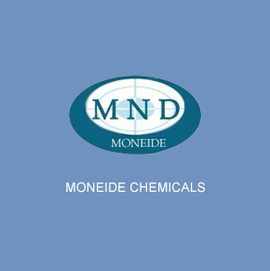
Key Product Specifications
Parameter
Specification
Chemical Name
Pararosaniline hydrochloride (Basic Red 9)
CAS No.
569-61-9
C.I. No.
Basic Red 9 (42500)
Molecular Formula
C19H18सीएलएन3
उपस्थिति
Dark Red Powder/Crystals
Strength
100% (or customized, e.g., 75%, 50%)
Light Fastness
Moderate (Blue Wool Scale 2-3)
Wash Fastness
Good (Grade 3-4)
Solubility in Water
Readily soluble, forms a red solution
pH Range for Application
Acidic to neutral (pH 3-7 for optimal uptake)
Absorbtion Max (λmax)
Approx. 540-550 nm
Detailed Manufacturing Process Flow of Basic Red 9
Schematic Manufacturing Steps:
Application Scenarios and Target Industries
Technical Advantages of Basic Red 9
Vendor Comparison: Selecting the Right Basic Red 9 Supplier
Key Comparison Parameters for Basic Red 9 Vendors
Criteria
Premium Supplier
Standard Supplier
Product Purity
>99% (HPLC verified), minimal by-products
90-95%, potential for residual impurities
Color Strength/Consistency
High (100% standard), Lot-to-lot variation <2%
Variable (70-90% standard), higher lot variance
Solubility
Rapid & complete dissolution, no undissolved particles
Slower dissolution, potential for residues
Technical Support
Dedicated technical specialists, application advice, troubleshooting
Limited or basic support, often sales-focused
Certifications
ISO 9001, ISO 14001, REACH compliant, SDS readily available
Basic certifications, potential gaps in compliance
Lead Time & Logistics
Consistent, on-time delivery, flexible shipping options
Variable lead times, less reliable logistics
Customization Options
Available for strength, particle size, packaging
Typically offer only standard products
Customized Solutions for Basic Red 9 Applications
Application Case Studies: Real-World Impact of Basic Red 9
Case Study 1: Enhanced Color Vibrancy in Acrylic Yarn Production
Case Study 2: Optimized Paper Dyeing for Specialty Packaging
Ensuring Quality, Reliability, and Support ( Principles)
Authoritativeness and Certifications
Trustworthiness: FAQ, Lead Time, Warranty, and Support
Frequently Asked Questions (FAQ)
A: When stored in a cool, dry place away from direct sunlight, Basic Red 9 typically has a shelf life of 2-3 years from the date of manufacture.
A: While it can offer some superficial tinting, for optimal fastness and deep shades on cotton, pre-mordanting or use of specific auxiliaries is recommended due to cotton's predominantly cellulosic structure. It performs best on acrylics and other fibers with anionic sites.
A: We employ a multi-stage QC process including spectrophotometric analysis for color strength and shade matching, HPLC for purity, and standardized application tests on target substrates. Every batch must pass these stringent checks before release, ensuring compliance with ISO standards.Lead Time and Fulfillment
Warranty Commitments
Customer Support and After-Sales Service
Conclusion
References
यह पहला लेख है





